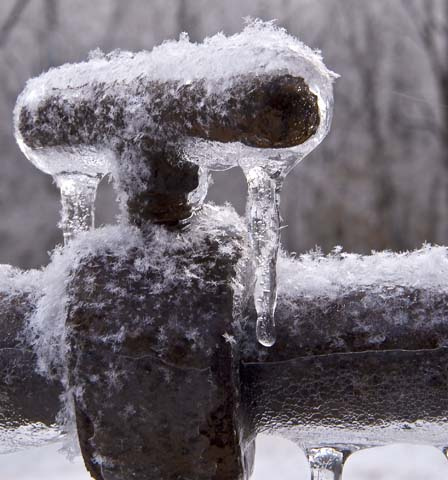Tips for Avoiding Frozen Plumbing in Cold Weather: Specialist Tips
Tips for Avoiding Frozen Plumbing in Cold Weather: Specialist Tips
Blog Article
Just how do you feel in relation to Prevent Frozen Pipes ?

Cold weather can ruin your pipes, specifically by freezing pipelines. Right here's just how to prevent it from taking place and what to do if it does.
Introduction
As temperatures drop, the danger of frozen pipelines boosts, possibly bring about expensive repair work and water damages. Comprehending just how to avoid icy pipes is crucial for house owners in cold environments.
Recognizing Frozen Pipes
What triggers pipelines to freeze?
Pipes freeze when subjected to temperature levels listed below 32 ° F (0 ° C) for extended periods. As water inside the pipes freezes, it expands, putting pressure on the pipeline wall surfaces and possibly triggering them to rupture.
Threats and damages
Icy pipelines can cause water supply disruptions, residential or commercial property damage, and expensive repair services. Burst pipelines can flooding homes and trigger comprehensive structural damages.
Signs of Frozen Water Lines
Identifying icy pipes early can stop them from rupturing.
Just how to determine frozen pipelines
Look for lowered water flow from faucets, unusual smells or noises from pipes, and noticeable frost on subjected pipelines.
Prevention Tips
Protecting susceptible pipes
Cover pipelines in insulation sleeves or use warm tape to protect them from freezing temperatures. Concentrate on pipelines in unheated or external areas of the home.
Heating techniques
Keep indoor areas adequately heated up, particularly areas with pipes. Open up cupboard doors to enable warm air to distribute around pipes under sinks.
Safeguarding Outdoor Pipes
Garden pipes and outside taps
Detach and drain pipes garden tubes prior to wintertime. Mount frost-proof spigots or cover outdoor faucets with protected caps.
What to Do If Your Pipes Freeze
Immediate actions to take
If you suspect icy pipelines, maintain faucets open to relieve stress as the ice melts. Utilize a hairdryer or towels soaked in hot water to thaw pipelines slowly.
Long-Term Solutions
Architectural modifications
Take into consideration rerouting pipes away from outside wall surfaces or unheated locations. Include extra insulation to attics, cellars, and crawl spaces.
Upgrading insulation
Purchase high-quality insulation for pipelines, attic rooms, and wall surfaces. Proper insulation assists preserve consistent temperatures and minimizes the danger of icy pipelines.
Verdict
Protecting against frozen pipes requires proactive steps and quick responses. By understanding the reasons, indications, and preventive measures, homeowners can protect their pipes during cold weather.
5 Ways to Prevent Frozen Pipes
Drain Outdoor Faucets and Disconnect Hoses
First, close the shut-off valve that controls the flow of water in the pipe to your outdoor faucet. Then, head outside to disconnect and drain your hose and open the outdoor faucet to allow the water to completely drain out of the line. Turn off the faucet when done. Finally, head back to the shut-off valve and drain the remaining water inside the pipe into a bucket or container. Additionally, if you have a home irrigation system, you should consider hiring an expert to clear the system of water each year.
Insulate Pipes
One of the best and most cost-effective methods for preventing frozen water pipes is to wrap your pipes with insulation. This is especially important for areas in your home that aren’t exposed to heat, such as an attic. We suggest using foam sleeves, which can typically be found at your local hardware store.
Keep Heat Running at 65
Your pipes are located inside your walls, and the temperature there is much colder than the rest of the house. To prevent your pipes from freezing, The Insurance Information Institute suggests that you keep your home heated to at least 65 degrees, even when traveling. You may want to invest in smart devices that can keep an eye on the temperature in your home while you’re away.
Leave Water Dripping
Moving water — even a small trickle — can prevent ice from forming inside your pipes. When freezing temps are imminent, start a drip of water from all faucets that serve exposed pipes. Leaving a few faucets running will also help relieve pressure inside the pipes and help prevent a rupture if the water inside freezes.
Open Cupboard Doors
Warm your kitchen and bathroom pipes by opening cupboards and vanities. You should also leave your interior doors ajar to help warm air circulate evenly throughout your home.

I was guided to that write-up about Preventing and dealing with frozen pipes from someone on our other blog. Feel free to take a moment to promote this blog posting if you enjoyed reading it. Thanks a lot for being here. Don't hesitate to visit our website back soon.
Click Here Report this page